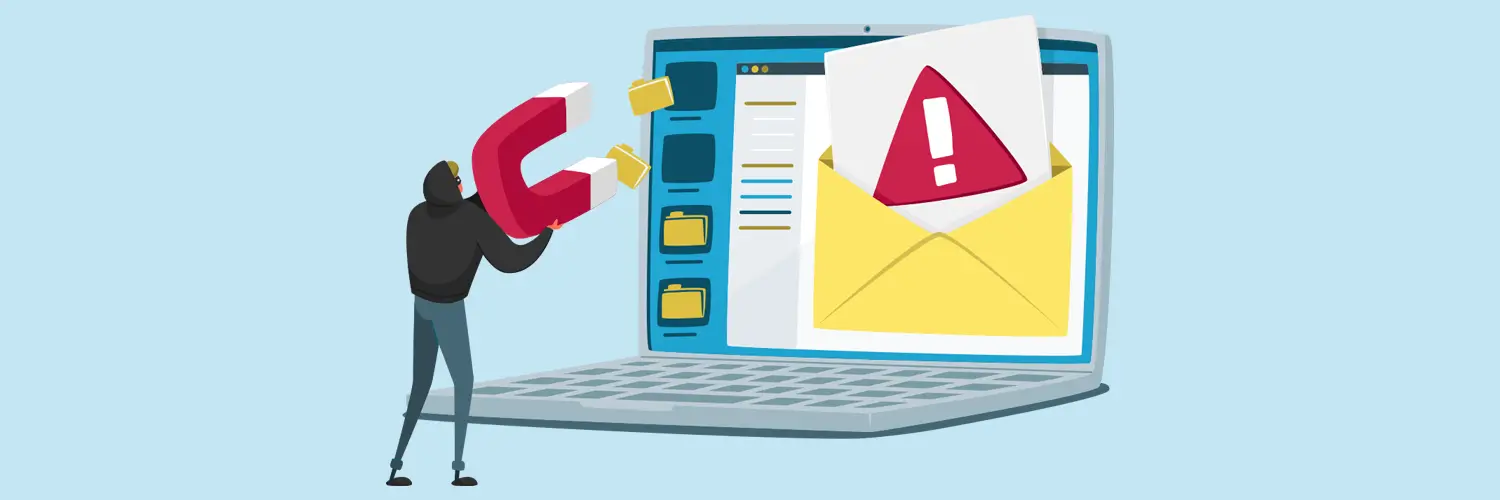
For better or for worse, brand trust today hinges on a company’s ability to secure its communications and protect its customers from increasingly sophisticated cyber threats. Among the most notorious and damaging of these threats are phishing and spoofing attacks, where malicious actors masquerade as legitimate entities to deceive unsuspecting victims. As organizations seek to bolster their defenses, the pivotal question arises: How can we prevent spoofing?
Understanding Phishing and Spoofing Attacks
Phishing and spoofing are cunning techniques employed by cybercriminals to trick individuals into revealing sensitive information or carrying out actions detrimental to their security. In a typical spoofing attack, the attacker forges the sender’s address on an email to appear as a trusted contact or a legitimate company. This false representation is often a precursor to phishing, where the attacker aims to harvest credentials or deploy malware.
These attacks capitalize on human error and the inherent trust users place in their communication channels, making them especially effective and damaging. Consequently, a strong strategy to prevent such attacks is imperative for any organization committed to safeguarding its reputation.
DMARC: The Spoof Detection Technology
Domain-based Message Authentication, Reporting & Conformance (DMARC) is an email validation system designed to pinpoint and protect against the misuse of email domains in phishing campaigns. Many email providers such as Google, Yahoo, and Outlook have already required businesses to implement DMARC in order to send emails.
But can DMARC prevent spoofing effectively?
The answer is yes. Let’s see how:
DMARC operates in tandem with two other authentication systems—Sender Policy Framework (SPF) and DomainKeys Identified Mail (DKIM)—to verify the authenticity of an email’s origin:
- SPF allows email senders to define which IP addresses are authorized to send email on behalf of a domain.
- DKIM attaches a digital signature to an email, verifying that it hasn’t been altered in transit and confirming the legitimacy of its sender.
DMARC builds upon these frameworks, providing domain owners with a mechanism to request feedback reports and instruct receiving servers on how to handle unauthenticated emails. This multi-layered validation process enables organizations to detect and respond to spoofing attempts, thwarting bad actors before they can cause harm.
The Power of DMARC in Preventing Spoofing
Implementing DMARC fundamentally elevates a domain’s defense against spoofing by ensuring that only legitimate communication reaches recipient inboxes. Here’s how:
- Enhanced Email Security: When set up correctly, DMARC authenticates emails, reducing the risk of malicious or suspicious messages reaching end users, thereby safeguarding sensitive data.
- Insights Through Reporting: DMARC provides detailed reports on email traffic from a domain, shedding light on possible spoofing attempts. This visibility helps organizations swiftly address any vulnerabilities, enhancing their overall email security posture.
- Brand Protection: By curtailing unauthorized use of a domain, DMARC fortifies a brand’s reputation, ensuring that customers can trust communications bearing its name.
While DMARC’s capabilities in spoof detection technology are strong, success relies on consistent monitoring and a responsive approach to its reports. These reports can highlight attempted breaches, yet the efficacy of DMARC diminishes without diligent analysis.
Optimizing DMARC Effectiveness
Although DMARC can significantly diminish the risk of spoofing, the intricacies involved in interpreting its reports necessitate a proactive and informed strategy. Google recommends outsourcing your DMARC implementation with third-party services, such as OnDMARC provided by 101domain.
Such services streamline the reporting process and offer expert insights, ensuring potential threats are not overlooked.
Benefits of third-party services include:
- Simplified Report Management: OnDMARC (provided by 101domain) and similar tools offer intuitive dashboards that convert complex data into actionable intelligence, saving time and resources.
- Advanced Threat Detection: These services deploy enhanced algorithms to spot anomalies or new trends in email traffic, providing an early warning system against potential spoofing attempts.
- Guidance and Support: With dedicated support channels, businesses can leverage expert advice to refine their DMARC policies and respond effectively to emerging threats.
Conclusion
So, can DMARC prevent spoofing? The answer is a resounding yes – provided that it is implemented comprehensively and monitored diligently. By embracing DMARC and leveraging the expertise of third-party services like OnDMARC, organizations can fortify their communication channels, protect their brands, and bolster customer trust.
In an era where cyber threats are constantly evolving, taking a proactive stance and leveraging the right tools can make all the difference. With DMARC, you acquire not just a defense mechanism, but a strategic ally in your ongoing cyber resilience journey.
Need Help With Your DMARC Setup?
Learn more about 101domain’s Managed DMARC Services and let us do the heavy lifting for you. We handle policy setup, monitoring, and reporting so you can rest easy knowing your emails are secure.
